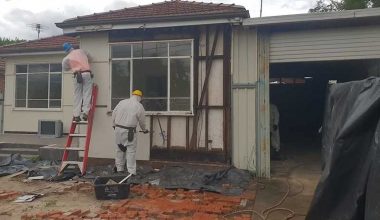Here, Gabrael House Demolition outline the 8 steps you need to take to ensure a smooth demolition process
1. The initial consultation
The first step toward getting your house demolished involves getting your home inspected, then collect the necessary council permits. The building and scope of works are determined and your demolition expert uses this information to provide you with a quote.
2. A quotation is given
Your demolition expert will provide you with a quote outlining the cost and nature of the work involved. This is often provided free of charge.
3. Obtaining permits
To proceed with your on-site demolition, a Development Application (DA) or Complying Development Certificate (CDC) approval for demolition is required. A DA is often applied for via your Local Council and rules vary as to what might be needed. A CDC can often be applied for by your demolition company. Since CDC approval is a set requirement across all of New South Wales, the requirements are always the same, regardless of what suburb your property is in.
The CDC process usually takes 21 days in total: two weeks while the application sits with council followed by an additional seven day waiting period. During this time, you are required to hand out letters to neighbouring properties letting them know that demolition work will be taking place. These letters must be distributed at least seven days before demolition begins.
4. Disconnect existing services
Before demolition commences, contact your gas retailer at least 6 weeks prior to commencement of demolition. Electricity, water and NBN should also be disconnected. Air Conditioning units should also be degassed prior to starting demolition. Your demolition provider may be able to assist in fencing, disconnection of power and portable toilet hire.
5. Manual work
Once the first four steps have been completed, manual demolition work can begin. This is done by hand, and usually involves the removal of hazardous materials such as asbestos (if present on the property). During this process, recyclable and reusable materials can also be salvaged.
6. Machine Works
After hazardous materials have been removed, mechanical demolition can begin. This is generally the most efficient and also the most cost-effective way to complete home demolition. Mechanical demolition is the most common form of demolition, in which the house is removed using excavators and other heavy machinery. It results in debris, which is then transported to an appropriate waste management tip.
7. Rubbish Removal & Cleanup
Once demolition is completed, the next important step is removal of all debris from the process. Often this can be a confusing process for homeowners due to the disposal requirements of individual materials, so it pays to have your demolition company assist with this step.
8. Demolition Clearance Certificate
After all seven steps have been completed, you will finally be eligible for a Demolition Clearance Certificate. This certificate proves your block of land is safe, clean and free of any asbestos – all of which are essential criteria before construction can commence. Even if a building is free of asbestos, it can often hide in soil on a property, which is why expertise is needed to both complete demolition and to meet all requirements. Now you can finally begin building!
For more information









